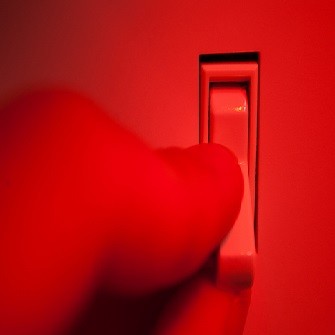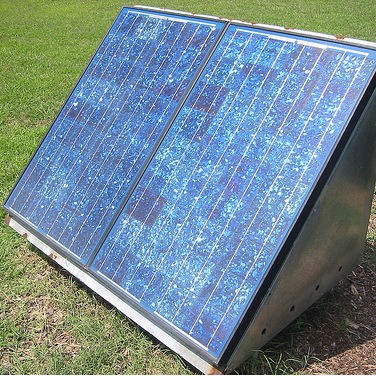Changes to permitted development for microgeneration in the UK€
Changes to permitted development for microgeneration in the UK
The following changes to permitted development regulations for England came into effect on 1 December 2011. The main changes are to that wind turbines and air source heat pumps have become permitted development (with significant caveats). See below for the complete wording. Click the following link for commentary on the amendment to permitted development for wind turbines.
Part 40 – INSTALLATION OF DOMESTIC MICROGENERATION EQUIPMENT
Class A – Solar PV and solar thermal
Permitted development
A. The installation, alteration or replacement of solar PV or solar thermal equipment on—
(a) a dwellinghouse or a block of flats; or
(b) a building situated within the curtilage of a dwellinghouse or a block of flats.
Development not permitted
A.1. Development is not permitted by Class A if—
(a) the solar PV or solar thermal equipment would protrude more than 200 millimetres beyond the plane of the wall or the roof slope when measured from the perpendicular with the external surface of the wall or roof slope;
(b) it would result in the highest part of the solar PV or solar thermal equipment being higher than the highest part of the roof (excluding any chimney);
(c) in the case of land within a conservation area or which is a World Heritage Site, the solar PV or solar thermal equipment would be installed on a wall which fronts a highway;
(d) the solar PV or solar thermal equipment would be installed on a site designated as a scheduled monument; or
(e) the solar PV or solar thermal equipment would be installed on a building within the curtilage of the dwellinghouse or block of flats if the dwellinghouse or block of flats is a listed building.
Conditions
A.2. Development is permitted by Class A subject to the following conditions—
(a) solar PV or solar thermal equipment shall, so far as practicable, be sited so as to minimise its effect on the external appearance of the building;
(b) solar PV or solar thermal equipment shall, so far as practicable, be sited so as to minimise its effect on the amenity of the area; and
(c) solar PV or solar thermal equipment no longer needed for microgeneration shall be removed as soon as reasonably practicable.
Class B – Stand alone solar
Permitted development
B. The installation, alteration or replacement of stand alone solar within the curtilage of a dwellinghouse or a block of flats.
Development not permitted
B.1. Development is not permitted by Class B if—
(a )in the case of the installation of stand alone solar, the development would result in the presence within the curtilage of more than one stand alone solar;
(b) any part of the stand alone solar—
(i) would exceed four metres in height;
(ii) would, in the case of land within a conservation area or which is a World Heritage Site, be installed so that it is nearer to any highway which bounds the curtilage than the part of the dwellinghouse or block of flats which is nearest to that highway;
(iii) would be installed within five metres of the boundary of the curtilage;
(iv) would be installed within the curtilage of a listed building; or
(v) would be installed on a site designated as a scheduled monument; or
(c)the surface area of the solar panels forming part of the stand alone solar would exceed nine square metres or any dimension of its array (including any housing) would exceed three metres.
Conditions
B.2. Development is permitted by Class B subject to the following conditions—
(a) stand alone solar shall, so far as practicable, be sited so as to minimise its effect on the amenity of the area; and
(b) stand alone solar which is no longer needed for microgeneration shall be removed as soon as reasonably practicable.
Class C – Ground source heat pump
Permitted development
C. The installation, alteration or replacement of a ground source heat pump within the curtilage of a dwellinghouse or a block of flats.
Class D – Water source heat pump
Permitted development
D. The installation, alteration or replacement of a water source heat pump within the curtilage of a dwellinghouse or a block of flats.
Class E – Biomass heating system
Permitted development
E. The installation, alteration or replacement of a flue, forming part of a biomass heating system, on a dwellinghouse or a block of flats.
Development not permitted
E.1 Development is not permitted by Class E if—
(a) the height of the flue would exceed the highest part of the roof by one metre or more; or
(b) in the case of land within a conservation area or which is a World Heritage Site, the flue would be installed on a wall or roof slope which fronts a highway.
Class F – Combined heat and power
Permitted development
F. The installation, alteration or replacement of a flue, forming part of a combined heat and power system, on a dwellinghouse or a block of flats.
Development not permitted
F.1 Development is not permitted by Class F if—
(a) the height of the flue would exceed the highest part of the roof by one metre or more; or
(b) in the case of land within a conservation area or which is a World Heritage Site, the flue would be installed on a wall or roof slope which fronts a highway.
Class G – Air source heat pump
Permitted Development
G. The installation, alteration or replacement of an air source heat pump—
(a) on a dwellinghouse or a block of flats; or
(b) within the curtilage of a dwellinghouse or a block of flats, including on a building within that curtilage.
Development not permitted
G.1 Development is not permitted by Class G unless the air source heat pump complies with the MCS Planning Standards or equivalent standards.
G.2. Development is not permitted by Class G if—
(a) in the case of the installation of an air source heat pump, the development would result in the presence of more than one air source heat pump on the same building or within the curtilage of the building or block of flats;
(b) in the case of the installation of an air source heat pump, a wind turbine is installed on the same building or within the curtilage of the dwellinghouse or block of flats;
(c) in the case of the installation of an air source heat pump, a stand alone turbine is installed within the curtilage of the dwellinghouse or block of flats;
(d) the volume of the air source heat pump’s outdoor compressor unit (including any housing) would exceed 0.6 cubic metres;
(e) any part of the air source heat pump would be installed within one metre of the boundary of the curtilage of the dwellinghouse or block of flats;
(f) the air source heat pump would be installed on a pitched roof;
(g) the air source heat pump would be installed on a flat roof where it would be within one metre of the external edge of that roof;
(h) the air source heat pump would be installed on a site designated as a scheduled monument;
(i) the air source heat pump would be installed on a building or on land within the curtilage of the dwellinghouse or the block of flats if the dwellinghouse or the block of flats is a listed building;
(j) in the case of land within a conservation area or which is a World Heritage Site the air source heat pump—
(i) would be installed on a wall or a roof which fronts a highway; or
(ii) would be installed so that it is nearer to any highway which bounds the curtilage than the part of the dwellinghouse or block of flats which is nearest to that highway; or
(k) in the case of land, other than land within a conservation area or which is a World Heritage Site, the air source heat pump would be installed on a wall of a dwellinghouse or block of flats if—
(i) that wall fronts a highway; and
(ii) the air source heat pump would be installed on any part of that wall which is above the level of the ground storey.
Conditions
G.3. Development is permitted by Class G subject to the following conditions—
(a) the air source heat pump shall be used solely for heating purposes;
(b) the air source heat pump shall, so far as practicable, be sited so as to minimise its effect on the external appearance of the building;
(c) the air source heat pump shall, so far as practicable, be sited so as to minimise its effect on the amenity of the area; and
(d) the air source heat pump when no longer needed for microgeneration shall be removed as soon as reasonably practicable.
Class H – Wind turbine
Permitted Development
H. The installation, alteration or replacement of a wind turbine on—
(a) a detached dwellinghouse; or
(b) a detached building situated within the curtilage of a dwellinghouse or a block of flats.
Development not permitted
H.1. Development is not permitted by Class H unless the wind turbine complies with the MCS Planning Standards or equivalent standards.
H.2 Development is not permitted by Class H if—
(a) in the case of the installation of a wind turbine the development would result in the presence of more than one wind turbine on the same building or within the curtilage;
(b) in the case of the installation of a wind turbine, a stand alone wind turbine is installed within the curtilage of the dwellinghouse or the block of flats;
(c) in the case of the installation of a wind turbine, an air source heat pump is installed on the same building or within its curtilage;
(d) the highest part of the wind turbine (including blades) would either—
(i) protrude more than three metres above the highest part of the roof (excluding the chimney); or
(ii) exceed more than 15 metres in height,
* whichever is the lesser;
(e) the distance between ground level and the lowest part of any blade of the wind turbine would be less than five metres;
(f) any part of the wind turbine (including blades) would be positioned so that it would be within five metres of any boundary of the curtilage of the dwellinghouse or the block of flats;
(g) the swept area of any blade of the wind turbine would exceed 3.8 square metres;
(h) the wind turbine would be installed on safeguarded land;
(i) the wind turbine would be installed on a site designated as a scheduled monument;
(j) the wind turbine would be installed within the curtilage of a building which is a listed building;
(k) in the case of land within a conservation area, the wind turbine would be installed on a wall or roof slope of—
(i) the detached dwellinghouse; or
(ii) a building within the curtilage of the dwellinghouse or block of flats,
* which fronts a highway; or
(l) the wind turbine would be installed on article 1(5) land other than land within a conservation area.
Conditions
H.3. Development is permitted by Class H subject to the following conditions—
(a) the blades of the wind turbine shall be made of non reflective materials;
(b) the wind turbine shall, so far as practicable, be sited so as to minimise its effect on the external appearance of the building;
(c) the wind turbine shall, so far as practicable, be sited so as to minimise its effect on the amenity of the area; and
(d) the wind turbine when no longer needed for microgeneration shall be removed as soon as reasonably practicable.
Class I – Stand alone wind turbine
Permitted Development
I. The installation, alteration or replacement of a stand alone wind turbine within the curtilage of a dwellinghouse or a block of flats.
Development not permitted
I.1. Development is not permitted by Class I unless the stand alone wind turbine complies with the MCS Planning Standards or equivalent standards.
I.2 Development is not permitted by Class I if—
(a) in the case of the installation of a stand alone wind turbine, the development would result in the presence of more than one stand alone wind turbine within the curtilage of the dwellinghouse or block of flats;
(b) in the case of the installation of a stand alone wind turbine, a wind turbine is installed on the dwellinghouse or on a building within the curtilage of the dwellinghouse or the block of flats;
(c) in the case of the installation of a stand alone wind turbine, an air source heat pump is installed on the dwellinghouse or block of flats or within the curtilage of the dwellinghouse or block of flats;
(d) the highest part of the stand alone wind turbine would exceed 11.1 metres in height;
(e) the distance between ground level and the lowest part of any blade of the stand alone wind turbine would be less than five metres;
(f) any part of the stand alone wind turbine (including blades) would be located in a position which is less than a distance equivalent to the overall height (including blades) of the stand alone wind turbine plus 10 % of its height when measured from any point along the boundary of the curtilage;
(g) the swept area of any blade of the stand alone wind turbine exceeds 3.8 square metres;
(h) the stand alone wind turbine would be installed on safeguarded land;
(i) the stand alone wind turbine would be installed on a site designated as a scheduled monument;
(j) the stand alone wind turbine would be installed within the curtilage of a building which is a listed building;
(k) in the case of land within a conservation area, the stand alone wind turbine would be installed so that it is nearer to any highway which bounds the curtilage than the part of the dwellinghouse or block of flats which is nearest to that highway; or
(l) the stand alone wind turbine would be installed on article 1(5) land other than land within a conservation area.
Conditions
I.3. Development is permitted by Class I subject to the following conditions—
(a) the blades of the stand alone wind turbine shall be made of non reflective materials;
(b) the stand alone wind turbine shall, so far as practicable, be sited so as to minimise its effect on the amenity of the area; and
(c) the stand alone wind turbine when no longer needed for microgeneration shall be removed as soon as reasonably practicable.
€






